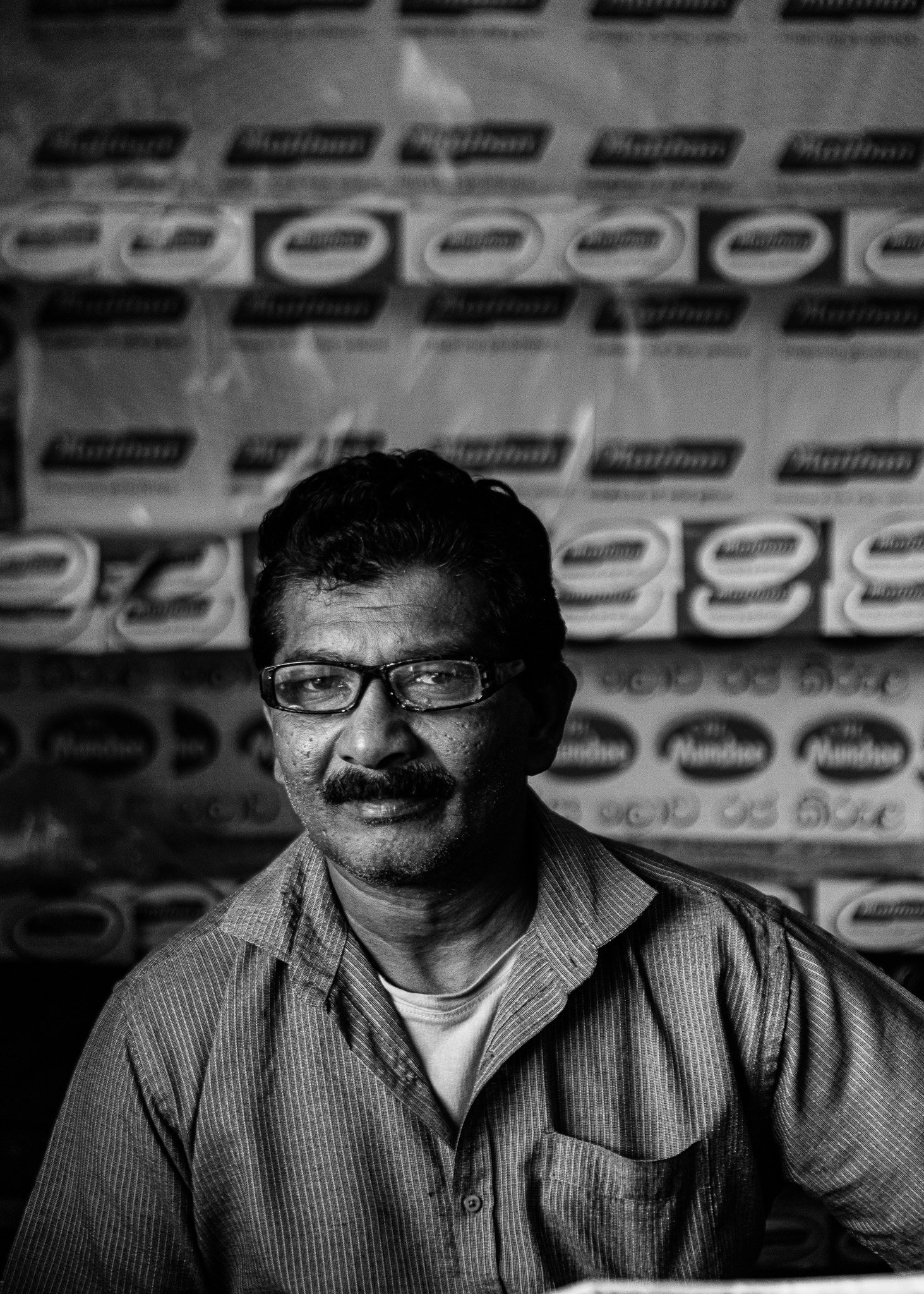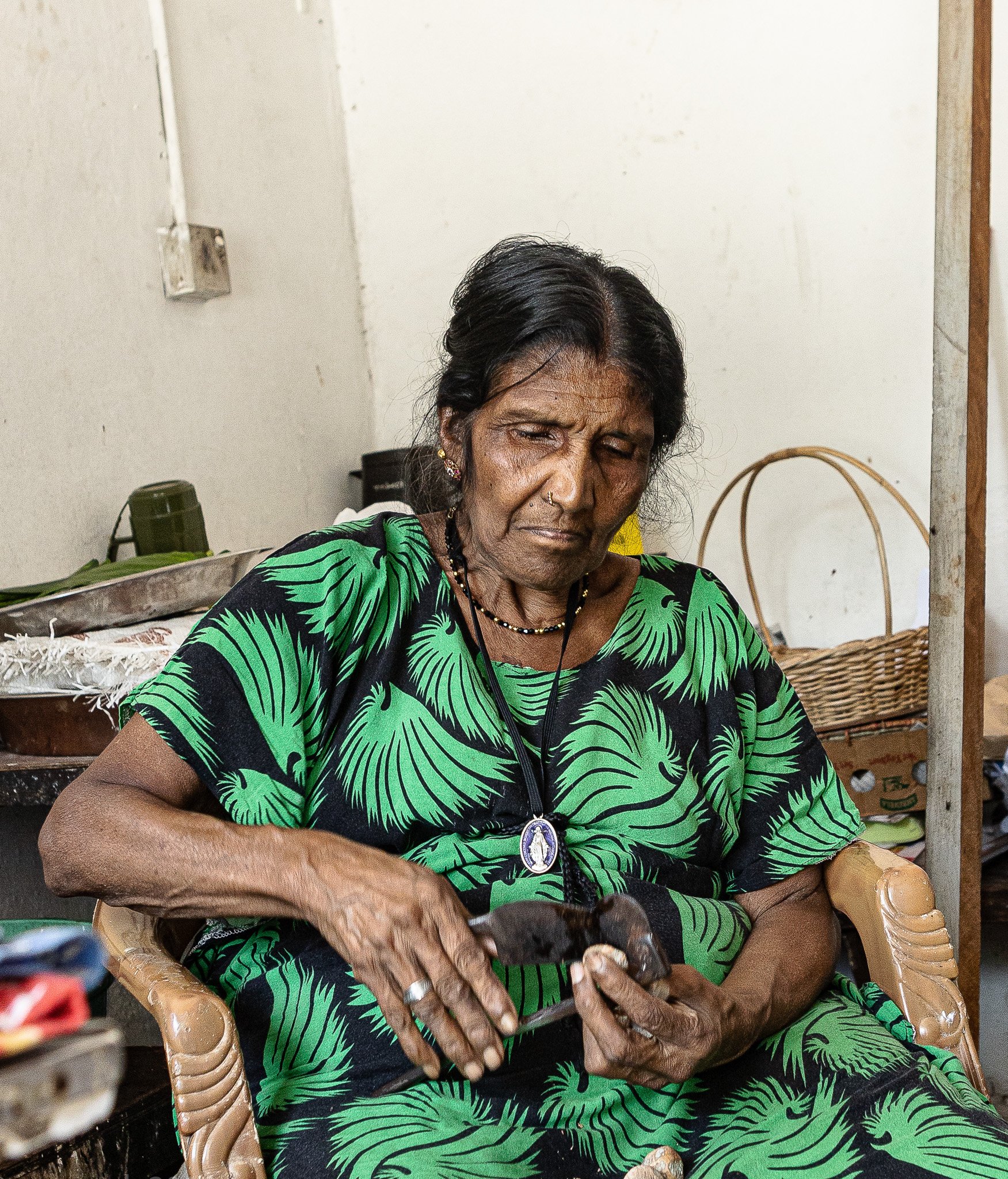About the work
This work concerns tea making and the people who dedicate their lives to small tea shops. These tea shops are the lifeblood of the village: representing people with a strong love for tea and the individuals who are the real backbone behind the making of tea.
This work is being titled "A Tea Maker's Story."
The main focus is on rural tea shops in Sri Lanka, but there are also a few small tea shops in Colombo city. We have four main religions in Sri Lanka: Buddhism, Hinduism, Islam, and Christianity. People of all religious faiths own the tea shops. Food shops are often run by Muslims and bakeries by Buddhists; the Hindus generally are vegetarian and specialise in Those restaurants. A fact worth noting is that women are, more often than not, the owners of the tea shops. During this project, I photographed just one tea shop owned by a man.














The British introduced tea to Sri Lanka when they colonised the island. During this time, they named the island Ceylon. They started ruling the island in the late 1700s. The first recorded or documented tea plant in Sri Lanka was in 1824. The British brought tea from India and planted it at the "Peradeniya Botanical Gardens" for non-commercial use.
Tea is grown in Sri Lanka and is one of our prime commodities. It is mainly grown in the highlands, in the island's centre. Tea is a traditional drink on the island, and when researched, it says that it is served to welcome guests and show their respect for them and their culture. Tea, in Sri Lanka and China, is still used as a medicine.
The rise of tea plantations came about when the coffee plantations on the island died off due to a plant disease named "coffee rust." James Taylor, a Scotsman, was among the first to start tea cultivation in Sri Lanka. James Taylor came to Loolecondera Estate in Kandy in 1867 and started a tea factory in 1872.
Tea shops are built in numerous ways. Some with wattle and daub, sand, cement, wood, rope, and aluminium sheets. Tea shops are also created with no firm structure but a chair and two or three tables. The way a tea maker makes tea is iconic as they use a 'gotta ‘, a long sock that serves the purpose of a strainer and infuses the tea as the boiling water percolates down the leaves.
This method hasn’t changed.
People tend to add jaggery or ginger to their tea, or they have it plain. An alternative to sugar is condensed milk, which is a personal favourite. The way a tea maker makes tea is a ritual. Lighting the wood fire, boiling the water, scooping the tea leaves from a container, and finally serving it.
This project is important as small tea shops in rural areas and cities are disappearing. They are being brought down or told to move, which is sad as the tea makers have to go away from their homes. When on vacation with family, tea shops like these are an integral part of our journey. They are the places that make the best cups of tea. I am happy and honoured to have seen these tea shops and the people who own them in my lifetime before they all fade away. Making tea is generally the only source of income these families have.
I spoke to all the people I photographed and inquired about their shops, and to my surprise, there was a woman I photographed who had been in the same spot for over 50 years, which was incredibly fascinating in my view.